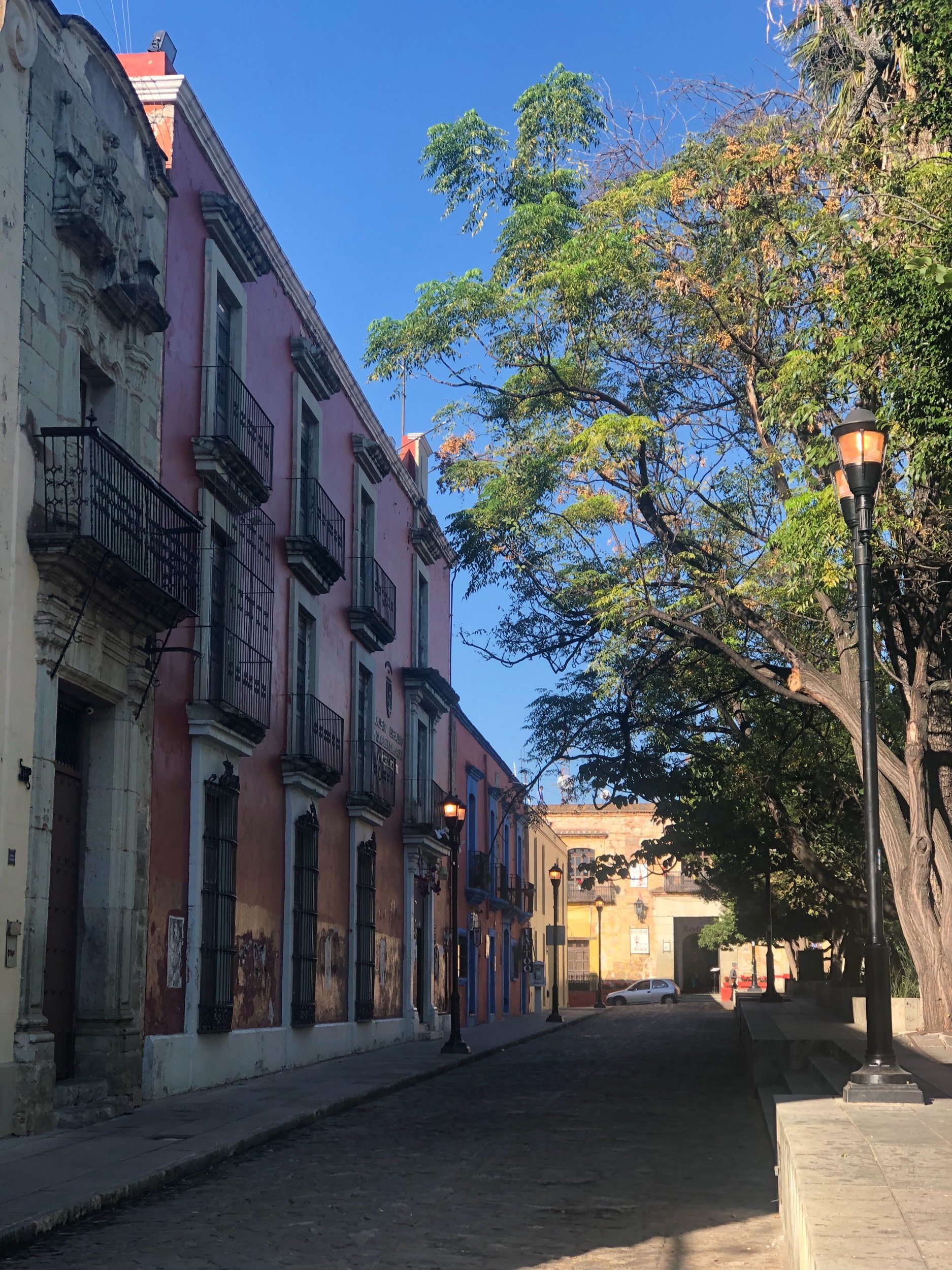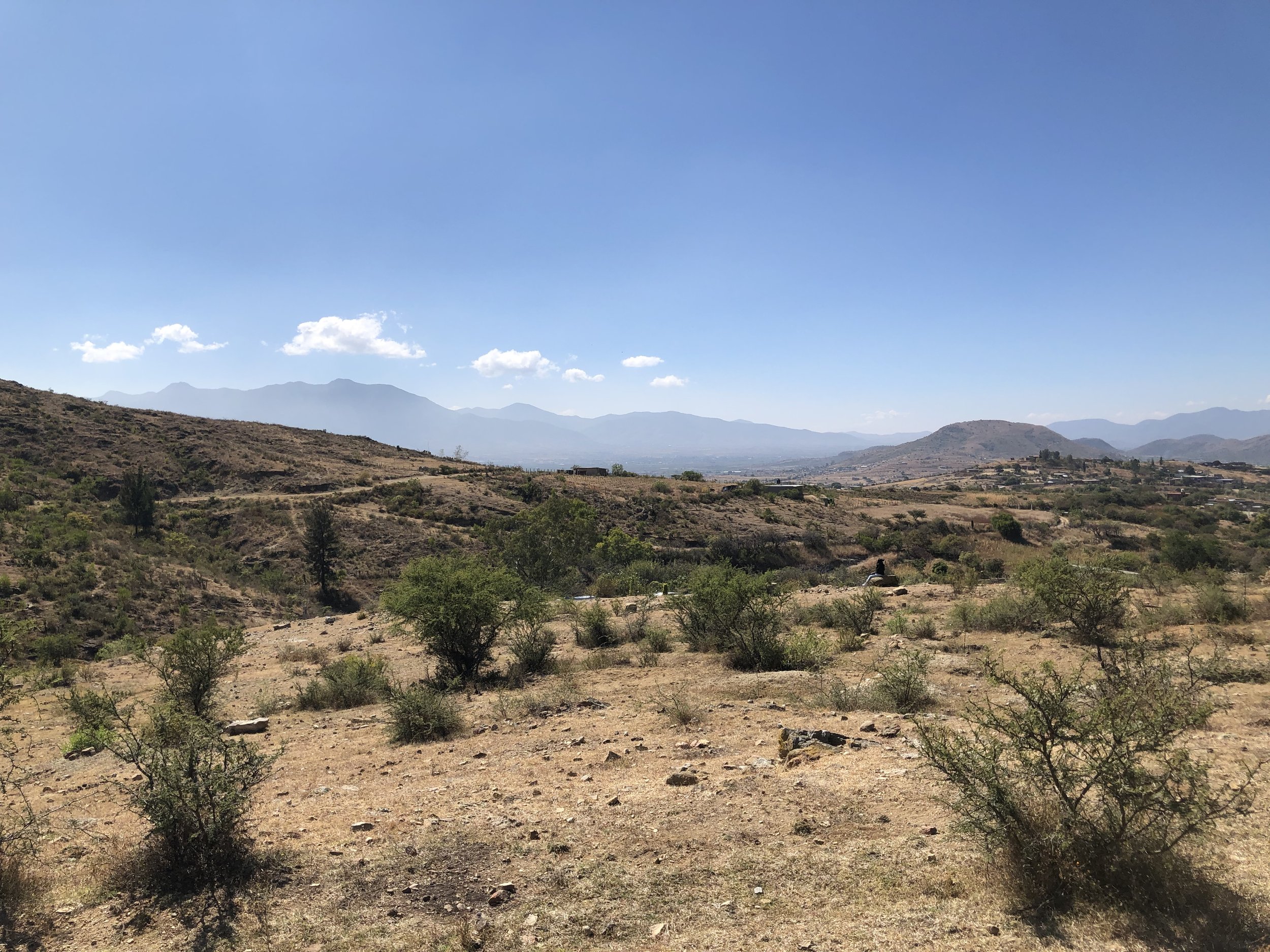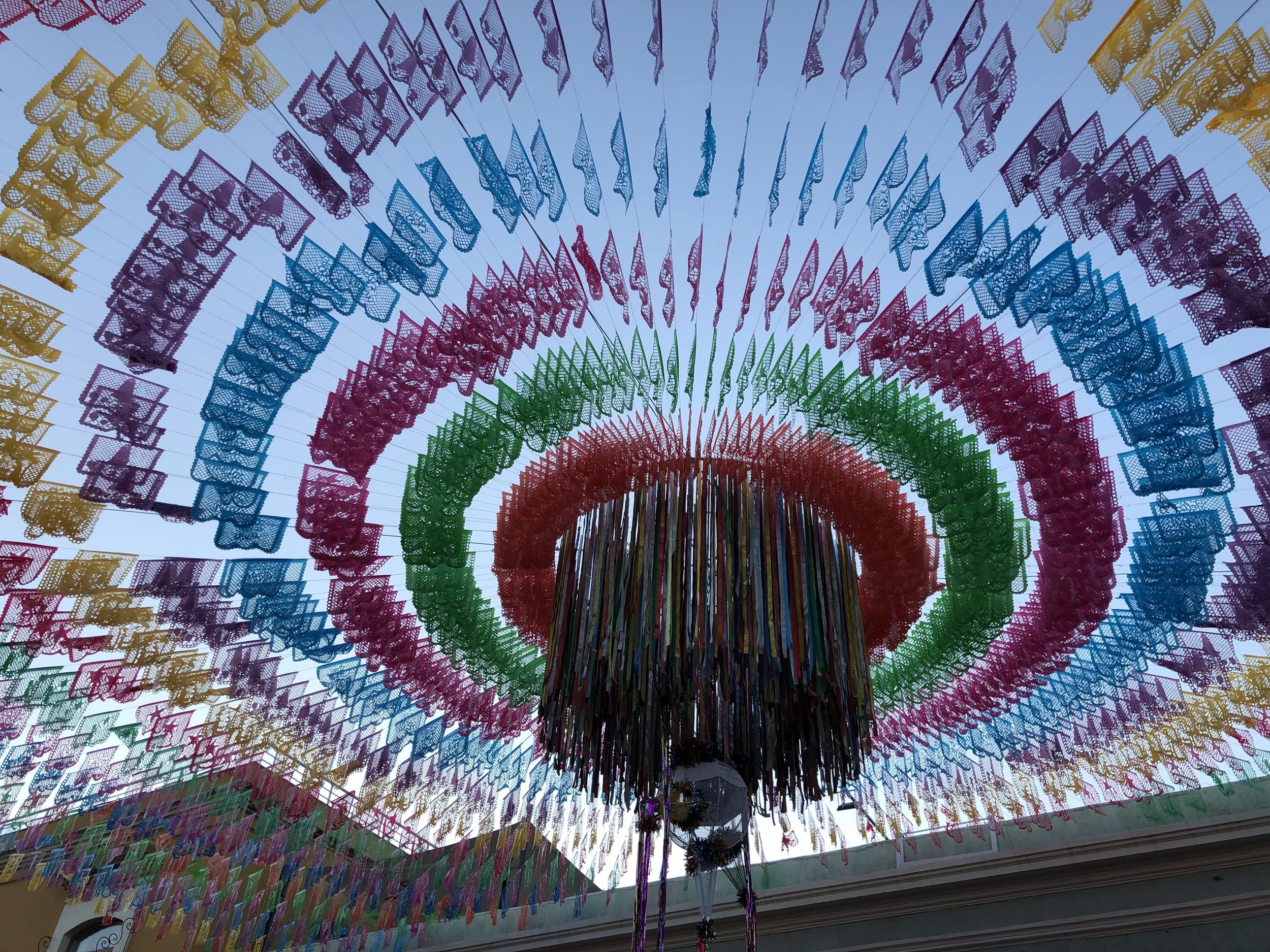Travel Guide to Oaxaca, Mexico
Location: Oaxaca, Mexico
Chakras: Sacral, Throat
Seasons: Dry season (October to April), Wet Season (April to October)
Landscape: Valley located between the Sierra Norte de Oaxaca and the Sierra Madre del Sur mountains.
Wow, Oaxaca. Known as a cultural heart of Mexico, it is a place of vibrant food, art and spiritual culture and tradition. It is an incredibly diverse state with 8 microclimates and 1/3rd of the state is still home to indigenous descendants. The diversity of this state lends itself to cultivating a rich creative culture in expression and ideas.
Before the Spanish conquest, Oaxaca was home to 16 recognized indigenous groups with many sub cultures. But the largest and most sophisticated society was the Zapotecs, who occupied much of the state of Oaxaca. The ancient Zapotecan city of San José Mogote is the oldest city in the Oaxacan Valley and was considered the most prominent civilization between 1500 and 500 B.C in the region. Along with the Olmecs, the Zapotecs are one of the oldest societies in Mexico. It is believed that the Zapotec society were the first in Mexico to build defensive barriers and ceremonial buildings around 1300 B.C., and ‘predates any other in the state in the use of adobe (850 B.C.), hieroglyphics (600 B.C.) and architectural terracing and irrigation (500 B.C.)’. Also skilled in astronomy and excavation, the Zapotecs built the ceremonial city of Monte Albán around 450 B.C. By the end of the 7th century, the Mixtec society from Guerrero and Puebla established themselves in the state of Oaxaca and conquered the Zapotecs by the 13th century. The Aztecs conquered the region by the 15th century.
The soul of Oaxaca is one of creative expression and activism. Artists utilize their skills and expression in the name of human rights, freedom and progress. Oaxaca has a history of being a loud voice in the arena of politics and its people do not shy away from voicing their beliefs and ideas. In the rural agricultural land, the are numerous indigenous peoples still caring for the land and hold a spiritual connection with its ancestors.
Things to do in Oaxaca
Oaxaca is a small and compact city with various neighborhoods to explore. However most people spend their time in the historic center. The city also serves as a good base for exploring the surrounding towns, ruins and landscapes. Oaxaca has beautiful architecture, a thriving art scene with many galleries and tallers, incredible restaurants and food, and a laidback culture with friendly and vibrant people.
Santo Domingo Temple & Zocalo Plaza
Built between 1570-1608 as a Dominican church and monastery, it is a fine example of Spanish Baroque architecture. The Zocalo and church remains as a hotspot for political activism.
Etnobotanical Garden
The Jardin Etnobotánico de Oaxaca is a botanical garden set in the former grounds of the Santo Domingo monastery. The space was converted in the 90s as a result of artists advocating for the space to be used to feature flora local to Oaxaca. Visits are available by limited tour only and I recommend that you line up early in advance to get your tickets as they often sell out. Currently, English tours are available tuesdays and thursdays at 11AM.
Textile Museum of Oaxaca
The Museo Textil de Oaxaca is a free museum showcasing the textile crafts and traditions of the Oaxacan region. You can learn about the various textile styles across Oaxaca and view fine examples of woven pieces. The museum also features an excellent shop where you can purchase some high quality textiles.
Markets
I love markets and Oaxaca has some fantastic ones where you can find food items, snacks, household items, textiles, crafts, and woven baskets (one of my obsessions). Benito Juarez is the man in market in town and is the largest.
Mercado Benito Juarez (7-9)
Mercado 20 de Noviembre (snacks) (7-9)
Mercado de Artesanías (crafts) (12-7)
Mercado Organico el Pochote (organic food market)(fri, sat, sun 8-6)
Neighborhoods
There are many neighborhoods outside the historic center to explore. Nearby barrios Jalatlaco and Xochimilco are two of the most colorful and photogenic. Here you’ll find vibrant street art and cute cafes.
Shopping
When you come to Oaxaca it is easy to do some serious shopping damage. This city is brimming with beautiful and unique handicrafts, textiles, ceramics, candles, art and all sorts of beautiful food items. Below is a list of my recommendations to check out.
Curated Pantry
Suculenta Provisions Store
Ceramics
Colectivo 1050
La Chicharra Ceramica
Tierra Quemada
Textiles
Store at the Museo de Textil
Galleria Fe y Lola
Tienda Q (local natural dyed cotton clothes)
Marchanta Oaxaca
Origen Textil
Central Textil
Los Baules de Juana Cata (curated textiles)
Handicrafts
Benito Juarez Market
Casa Itaa
Andares del Arte Popular
Colectivo Huizache (bi level curated store)
La Casa de Los Artesanias
Where to Eat & Drink in Oaxaca
The other thing to do in Oaxaca…EAT! You’ll be thinking about what to eat for breakfast, lunch, snack, more snacks, dinner and of course drinks. Oaxaca is a great drinking town with amazing food. Below is a list some recommended places to check out.
Restaurants
Criollo
Origen
Sabina Sabe
El Destilado
Pitiona - rooftop views, 6 course menu
Casa Oaxaca
Boulenc
Mezcal
Mezcaleria In Situ
Mezcaleria
Mezcal Palenque
Mezcaloteca
Mezcaleria Cuish
Los Amantes Mezcaleria
Sabina Sabe
Late Night
Lechoncito de Oro (suckling pig tacos)
Tlayudas Dona Maria (tlayudas)
What to Know About Oaxaca
How to Get to Oaxaca
The Oaxaca airport is about 15 minutes outside of the heart of the city center. Taxis from Oaxaca airport cost 90 pesos per person (approximately $4.60) for the collectivo or 350 pesos (approximately $18) for a private taxi.
Where to Stay in Oaxaca
Grana Bnb
El Callejon
Hotel Azul
Casa Oaxaca
La Calera
Hotel Antonieta
Hotel Los Amantes
Casa Criollo
Pug Seal
Hotel Escondido Oaxaca
Casa Hotel Carmen
Quinta Real Oaxaca
Hotel con Corazon
What to Pack for Oaxaca
Depending on the time of the year, generally you will want to pack in layers. From tshirts to having a jacket on hand. For women, packing more on the conservative side is best — avoiding shorts and revealing tops. Long skirts and dresses are good. If you plan on visiting nearby towns it gets hot during the day and you might need hiking clothing if you plan on hiking the trails and doing some of the outdoorsy activities.
Oaxaca Packing List:
Tshirts, pants, long skirts and dresses for during the day
Active wear or hiking apparel for outdoors excursions
Swimsuit and towel for visiting hierve de agua
Long sleeve tops / sweater, jacket for the evening
Hat, sunglasses, sunscreen
Day pack / backpack, powerbank
Reusable water bottle
Day Trips from Oaxaca
Teotitlán del Valle
Teotitlan del Valle is primarily a Zapotec town located about an hour drive outside Oaxaca city and is also an entry point to the Sierra Norte mountains if you desire to hike the mountain trails. The town is famous for its local floor loom weaving tradition. Here you can learn more about the craft of weaving and purchase locally dyed and woven wool rugs.
San Marcos Tlapazola
San Marcos Tlapazola is a small Zapotec town located about an hour drive from Oaxaca city. The town is famous for the production of Oaxacan red pottery.
San Bartolo Coyotepec
San Bartolo Coyotepec is a small town located about 40 minutes from Oaxaca city and is known for its production of Oaxacan black pottery.
Atzompa
Atzompa is an ancient town built originally as a satellite residential city to nearby Monte Alban. The town is located about 25 minutes from Oaxaca city and is set up on a hill with sweeping views. Here you can visit the Atzompa archaeological site and it is also well known for its production of Oaxacan green pottery.
Monte Albán
Monte Albán is a UNESCO world heritage site located about 20 minutes outside Oaxaca city. It was built by the Zapotecs as a ceremonial, cultural and political capital of the Zapotec society, serving as the capital between 500 B.C. - 800 A.D. the site was built on an excavated and terraced mountain range, and features temples, pyramids, tombs, canals and ball game courts.
Mitla
The archaeological site of Mitla is located about an hour outside of Oaxaca city. Mitla was originally built by the Zapotecs around 600 B.C. as a sacred burial site for the Zapotec royalty.
Hierve el Agua
Hierve el Agua is a petrified waterfall 50 meters tall located about an hour and a half from Oaxaca city. It is also an old Zapotec site with an ancient canal and irrigation system and likely an ancient ceremonial center. There are two pools you can swim in with sweeping views of the valley below.














































